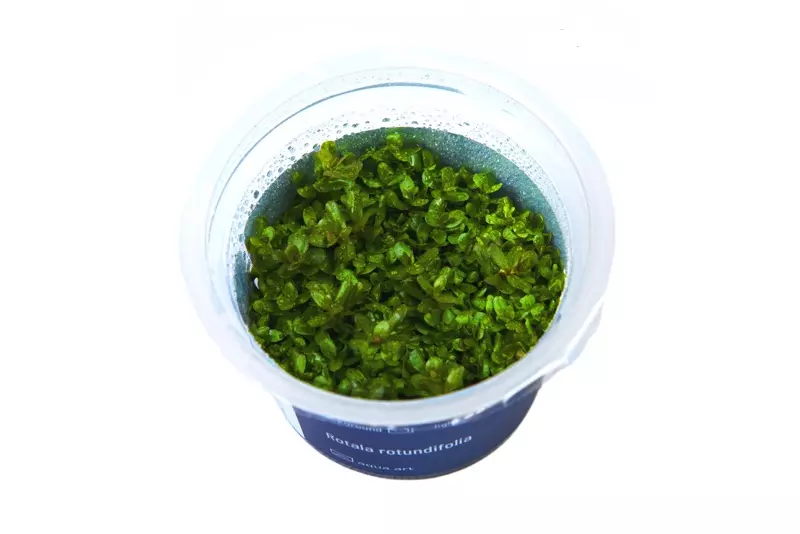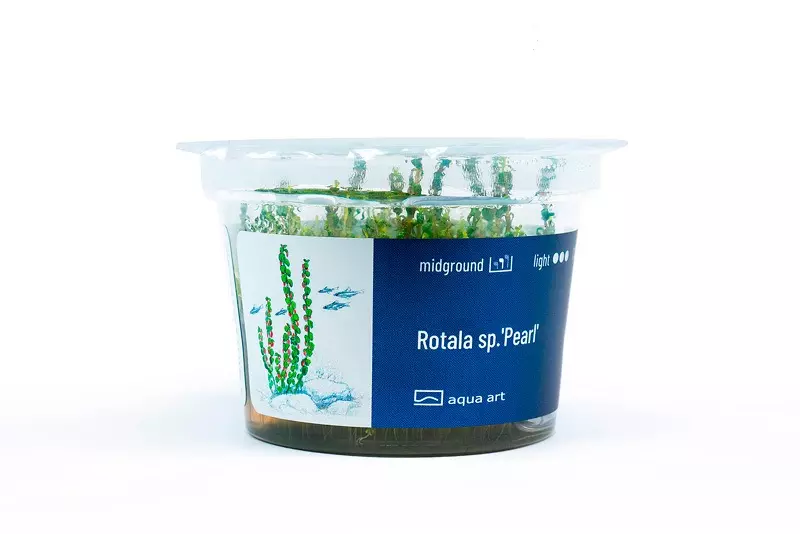Product information "Rotala macrandra sp. 'Pearl'"
Rotala sp.' Pearl'
.
Rotala sp. 'Pearl' has tiny, delicate leaves that curve downward. These can shine in shades of green, pink and purple and look very graceful.
- Difficulty of cultivation: medium
- Light requirement: high
- CO₂ requirement: high
- Adult plant height: up to 25 cm
- Growth rate: medium
- Temperature: 18-30°C
- Aquarium location: middle ground, nano aquarium
- Origin: Asia
- Cup diameter 6 cm
Very small-leaved stem plant is a selection of Rotala macrandra. It is also known as Rotala sp. 'Pearl'. This form has downward curved, short leaves.
It needs strong lighting, rather soft water and good CO2 and nutrients are recommended. Like Rotala macrandra 'Mini Type 2', 'Pearl' is probably a mutant of Rotala macrandra 'Green'. It tends to produce shoots that are the same as 'Green' Often these appear very soon after planting. These shoots grow much faster and maintain the growth pattern typical of 'Green'. They should be cut as soon as they appear to maintain the dwarf form typical of 'Pearl'. Propagation by cuttings can also be selected by replanting only the 'Pearl'-typical shoots.
This dwarf form of Rotala macrandra comes into its own as a group in the foreground or middle ground, also and especially in nano aquariums.
Planting: The plant must be removed from the cup and thoroughly rinsed from the gel under running water. This is best done by placing the plant in a container of lukewarm water. Most of the gel will then fall off by itself. Divide the contents of the cup into 1-2 cm lumps and then place them at a small distance.
.











.jpg)












